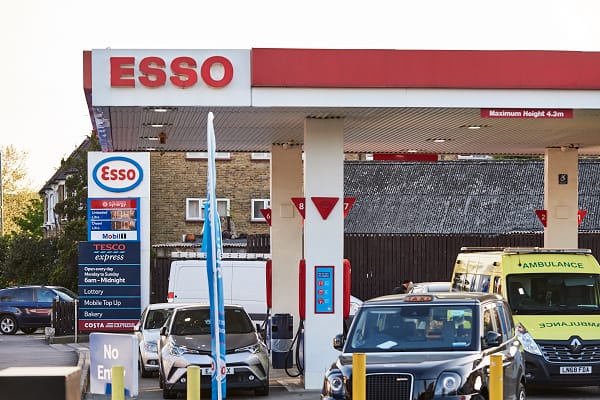Bussiness
Seven key differences between web portals and websites – London Business News | Londonlovesbusiness.com

Web portals and websites stand as two prominent entities, each with distinct purposes and functionalities. While both serve as online platforms, they cater to diverse needs and audiences. Understanding these distinctions is crucial for online businesses to make the choice between b2b web portal development or b2b website development that works best for their needs and objectives. In this article, we delve into seven key differences between web portals and websites, shedding light on their unique characteristics and functionalities.
Purpose
Web portals serve as centralised platforms offering a wide array of resources, services, and information tailored to specific user groups or communities. They emphasise functionality, interactivity, and personalised experiences, aiming to streamline access to various tools and content. In contrast, websites primarily function as online representations of entities, providing informational or promotional content to visitors. They focus on showcasing the entity’s brand, products, or services, with less emphasis on interactivity or personalised experiences. Essentially, while web portals prioritise utility and user engagement, websites prioritise communication and branding.
Functionality
Web portals boast multifaceted functionality, offering interactive features like personalised dashboards, user authentication, collaboration tools, and integration with external services. They prioritise user engagement and streamline access to diverse resources. Conversely, websites primarily provide static or dynamic content for informational or promotional purposes, with limited interactive elements. While websites may include forms or multimedia, their functionality typically revolves around content presentation rather than user interaction or integration with external services. In essence, web portals excel in providing a wide range of interactive functionalities tailored to specific user needs, whereas websites focus on delivering content to a broader audience.
Customisation
Web portals offer extensive customisation options, allowing users to personalise their experience through features like personalised dashboards, content filters, and user preferences. Users can tailor their interface to suit their specific needs and preferences, enhancing usability and engagement. In contrast, websites generally provide limited customisation options for individual users. While website owners may customise the overall design and layout, visitors typically have minimal control over their browsing experience. Essentially, web portals prioritise user-centric customisation to enhance usability and satisfaction, whereas websites focus more on the presentation of standardised content to a broad audience.
User authentication
Web portals require user authentication for accessing personalised content and services, typically through login credentials. This authentication process ensures security and enables the portal to deliver tailored experiences to individual users based on their profile and preferences. In contrast, websites usually do not mandate user authentication for accessing public content. Visitors can freely browse the site without the need to log in. While some websites may offer optional account creation for enhanced features or personalised experiences, user authentication is not a fundamental requirement for accessing the site’s primary content. Essentially, web portals prioritise personalised interactions secured through user authentication, whereas websites prioritise accessibility to public content without authentication barriers.
Content aggregation
Web portals excel in content aggregation, pulling information from diverse sources such as news feeds, forums, social media, and databases. This aggregated content provides users with a comprehensive view of relevant information and resources within a single platform. Users can conveniently access a wide range of content without the need to visit multiple websites or platforms. Conversely, websites primarily showcase content curated or created by the site owner, with limited external content integration. While websites may feature some external content, their focus is more on presenting original or curated material rather than aggregating content from various sources.
Interactivity
Web portals prioritise interactivity by offering features like forums, chat rooms, messaging, and social networking, fostering user engagement and collaboration. These platforms encourage users to interact with each other and with the portal’s content, creating dynamic communities and facilitating information exchange. In contrast, websites typically focus on presenting information to visitors, with limited interactive elements such as forms or multimedia. While websites may offer some degree of interactivity, their primary function is to deliver content rather than encourage extensive user engagement. Essentially, web portals emphasise active participation and interaction, while websites prioritise passive consumption of content.
Integration
Web portals prioritise integration by seamlessly incorporating external services, applications, and data sources into a unified platform. This integration enhances functionality and convenience for users, who can access a wide range of services and resources within the portal environment. Portals often feature integrations with email, calendars, document management systems, and other tools, streamlining workflows and enhancing productivity. In contrast, websites typically operate as standalone entities without extensive integration with external services. While websites may include links to external content or services, their functionality is generally self-contained, focusing on delivering information rather than facilitating extensive integrations with external systems.
Summing up
Whether aiming to communicate a message, facilitate collaboration, or streamline access to resources, choosing the right platform is pivotal for achieving digital success in an increasingly interconnected world. While websites primarily serve as digital storefronts for entities, showcasing their brand and offerings to a broad audience, web portals function as dynamic hubs tailored to specific user groups, offering personalised experiences, interactivity, and integration with external services. By comprehending these distinctions, businesses, organisations, and users can leverage the strengths of web portals and websites to optimise their online presence and interactions.









